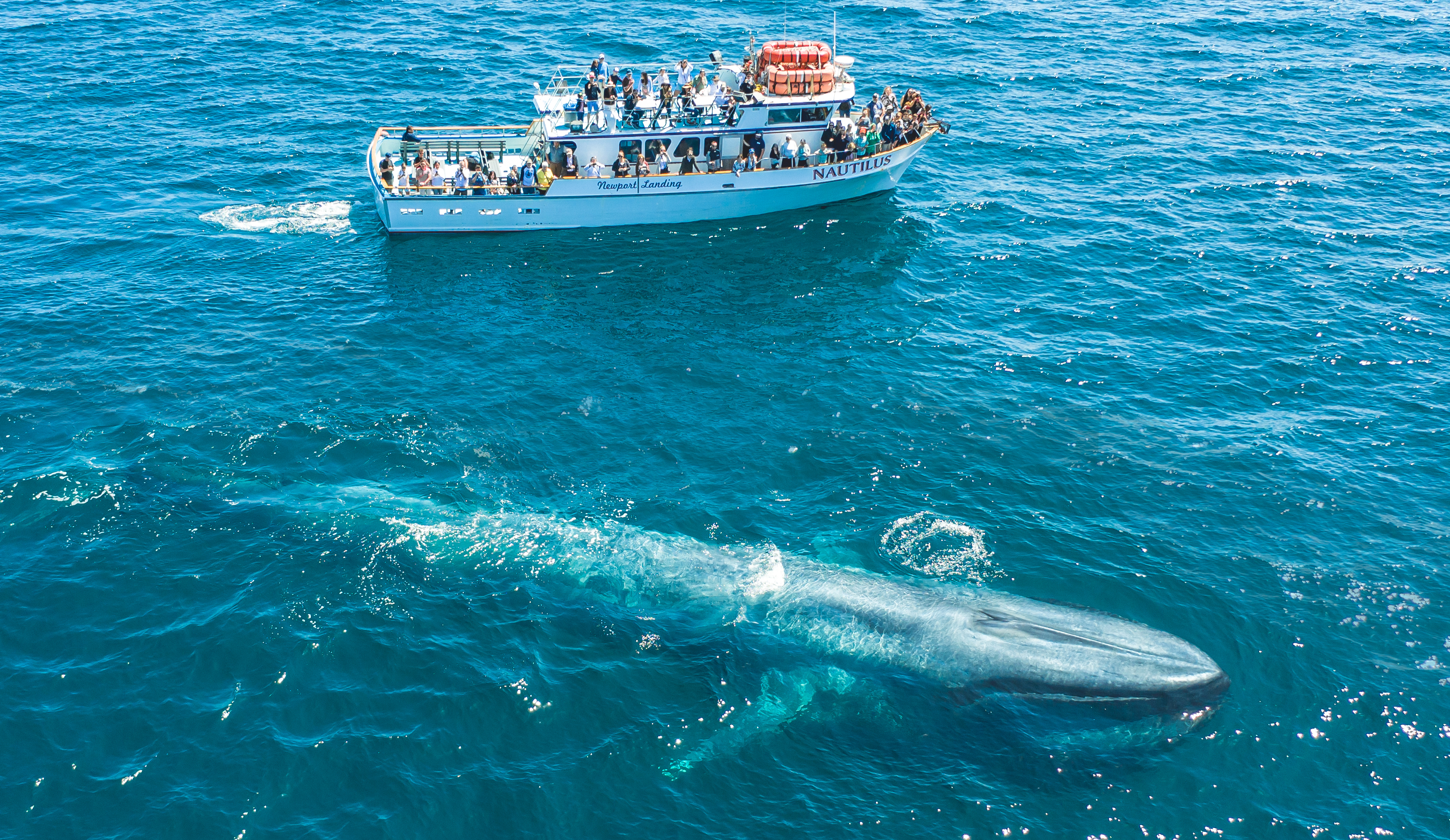BLUE WHALE WATCHING (Balaenoptera Musculus)

Blue whales are the largest animal to ever live on the planet, with the largest blue whale on record reaching over 104 feet in length. By comparison, the largest dinosaur, the Brachiosaurus was 85 feet in length and about 50 feet tall. The heart of a blue whale weighs over 1000 pounds and over 14,000 pounds of blood flows through it. With such a large animal you would think its food source would need to also be quite large but ironically the largest of all animals feeds on krill, a very small, shrimp like creature that is found in nutrient rich upwellings in very large quantities. Plankton is the blue whale’s other food source and is found with krill in the same waters.
Blue whales do not have teeth, but feed using a filter process, sucking in huge quantities of water and then filtering out the krill and/or plankton for consumption. The average blue whale will consume from one ton to three tons of food per day!
Blue whales often travel in twos and can swim from as slow as one mile an hour when feeding to over 40 miles an hour when threatened. Imagine an 85 foot long blue whale traveling 40 miles an hour—quite a sight! Blue whales breathe air, but can remain underwater for an hour or more before needing to come to the surface to breathe. The spout can reach heights of 40 feet or more; that’s over 3 stories high!
Along with being the largest of all animals the blue whale also has the distinction of being the loudest and their call exceeds the noise of a jet airplane. Luckily blue whales live in the ocean because their call would damage human ears if on land and in close proximity. Their loud call not only serves to locate other blue whales, but also as a sort of sonar to find food sources. With a range of several miles, the blue whales are very effective at locating rich food sources.
Blue whales have been known to live to over 40 years, having few natural predators other than killer whales that sometimes attack young blues and, of course, man. Blue whales were placed on the protected species list in 1966 and as a result have recovered some in the last 20 years to about 14,000 worldwide.
Blue whales were quite rare in southern California waters until just about 10 years ago with single sighting drawing news coverage. That changed in about 2005 and each summer and fall, whale watchers are treated to incredible blue whale watching with multiple blue whales often sighted on a single cruise. It is amazing that in one of the largest urban areas in the world such a flourishing marine environment exists.


